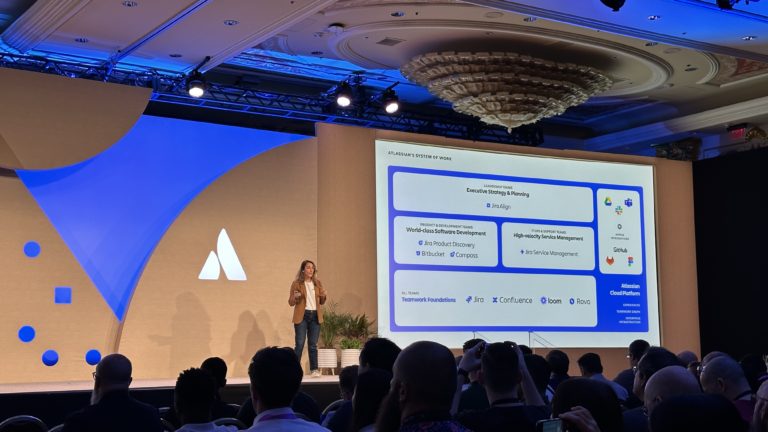
New Consumption Patterns Pose New Demands On Data Analysis
“Suppose I’m selling ice cream at a carnival, and I’m aware of an upcoming sunny day, coupled with being a holiday. In such a scenario, I anticipate selling a significantly higher volume compared to a typical rainy Tuesday. I can strategically attract more customers, stock up on inventory, and ensure preparedness to maximize earnings. This fundamental principle is applicable across diverse businesses and industries. It’s a very simple example of how freely available data can be combined with one’s own data to yield benefits. The principle is generalizable to all types of businesses in all industries”.
This is how Ruth Marie Dahl Jensen, department head at Computas, introduces the theme of our video meeting – which is actually the current crisis. Jensen is an expert in data analysis and cloud services, with extensive experience in advising Norwegian companies in digital development. Along with colleague and team leader Anne Karin Dahle, she explains what Norwegian companies can do to emerge stronger from a difficult and unpredictable situation.
“Simple examples like the one with the ice cream are good in a normal situation and demonstrate the value of the type of data analysis we are talking about. But today, we are not in a normal situation. Now, there are entirely different mechanisms at play. Consumption patterns and customers have changed as a consequence of the corona situation. The framework within which you operate can be turned upside down in a matter of hours, depending on what Mette Frederiksen says. This makes it difficult to make good decisions based solely on your own historical data,” says Jensen.
“Data-driven companies will be better equipped to capture new trends and adapt quickly. However, for good insight and a solid decision basis, one must think more broadly about the data one relies on, and one’s own data should be combined with external data,” she explains.
The Problem With Data Without Context
A growing number of companies have gradually begun to embrace more advanced data analysis than before. The limiting factor is currently the delay in transitioning to using external data, and the potential of the cloud is still pending. Instead, many choose to rely on what they have in their own data warehouses.
“The data warehouses within companies consist of operational data collected over time based on either regulatory or business needs. They have been developed within a specific context, and purchased solutions will also have been developed under the same conditions. This means that the data will reflect and be owned by the organization itself. Therefore, they can only tell what has happened internally and are not of great help in predicting based on external factors,” explains Dahle.
“In simple terms, the ice cream vendor’s bun baker’s data warehouse does not capture that there is sunny weather reported on DMI Yr, and that schools had a planning day. All the data shows is that three thousand extra buns were sold on a given date. Without contextual information, one might end up concluding that they should make more ice cream and bake more buns on the same date next year and invest based on incorrect assumptions. Or just as bad – miss opportunities, for example, on the next sunny day off,” she elaborates.
Available and Free Data Has Extra Value in Crises
When Computas experts talk about freely available data, they are referring to information about factors that affect the organization from the outside. Typically, this includes information from public sources, but also social media, communication, or transportation companies can be sources. In today’s unique situation, there may be few Norwegian datasets available, but international data sources can provide updated information.
“Through sources like the EU’s global data portal, for example, you can see various reproduction rates in different parts of the world. This information can give an idea of which areas are likely to tighten or loosen restrictions. This can provide context to your own data, benefiting the improvement of responses to changes both upward and downward in the value chain,” says Dahle.
In such special situations as the current one, there is a greater reliance on human analysis than usual. The shutdown of society could not be predicted solely from data. However, the principle that the best approach is to combine knowledge about your own business with external sources still holds. This does not necessarily mean incorporating external information into existing data warehouses; effective use of the cloud will often be more value-creating.
“The external data itself will typically not be something crucial for the business to possess. Instead, they will provide the most value when they provide context to the analyses based on the data you already have,” says Jensen.
Look At What You Got
Whether society needs to open up more or tighten restrictions, data analysis can help make better decisions. The two experts point out that in the initial phase of the lockdown, problems arose when departures in public transportation were suspended, affecting healthcare personnel who relied on it to get to work. Perhaps this could have been avoided with better integration of data? They are, in any case, convinced that the collection and integration of various types of information will be crucial for how successfully society returns to normal.
“The most important lesson is that many businesses will struggle if they do not start contextualizing their own data using external sources. Often, simple steps are needed to get started. In practice, it often involves moving existing data to the cloud, and many cloud providers have excellent solutions to simplify the process,” explains Jensen.
“The work itself involves figuring out what you have today. Don’t start by mirroring the entire data warehouse. Map it wisely so that you bring the key figures with you. And remember that new data is the most valuable in these times.”
Artificial intelligence Atlassian Automation Big data Cloud computing Confluence Data analysis Jira Jira Service Desk Jira Service Management Security Work methodology



